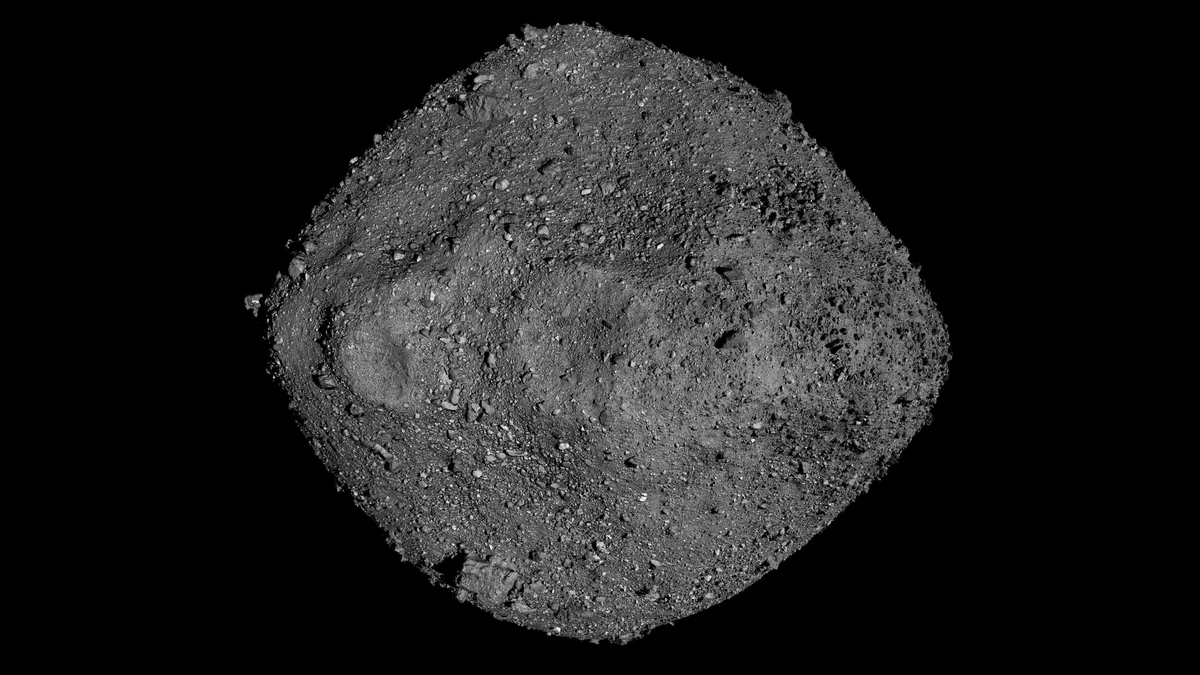
The near-Earth asteroid Bennu holds a treasure trove of cosmic history, containing stardust that predates our solar system, along with organic materials and ices from interstellar space. Three groundbreaking studies of the asteroid's sample materials have shed light on its origins and the conditions in the cosmos before our solar system formed 4.6 billion years ago. Scientists globally have been meticulously analyzing these samples since they were brought to Earth in 2023 by NASA's OSIRIS-REx mission, which successfully landed on Bennu and collected samples in 2020.
The first of the three studies, published on August 22 in the journal Nature Astronomy, proposes that Bennu's ancestor underwent a catastrophic breakup due to a collision after a complex history. This ancient body contained materials from diverse environments: regions close to the sun, areas farther out within our solar system, and even beyond in interstellar space. By examining the isotopes present in Bennu's dust, scientists were able to identify these distinct origins. Isotopes from the solar system exhibited a different composition compared to those derived from interstellar stardust, highlighting the varied sources of Bennu's material.
According to Ann Nguyen, co-lead author of the study and a planetary scientist at NASA's Johnson Space Center in Houston, these materials traveled vast distances to the region where Bennu's parent asteroid formed. Researchers believe that this parent asteroid originated in the outer solar system, possibly beyond the orbits of Jupiter and Saturn. A dramatic event followed: an incoming asteroid struck the parent body, causing it to break apart. Co-lead author Jessica Barnes, an associate professor at the University of Arizona's Lunar and Planetary Laboratory, explained that after the initial impact, the fragments reassembled, potentially undergoing this cycle multiple times before some materials merged to form Bennu.
The second paper, also published on August 22 in the journal Nature Geoscience, compares Bennu with primitive meteorites and asteroid Ryugu, which was sampled by Japan's Hayabusa2 mission. NASA officials noted that the parent asteroids of Ryugu, Bennu, and these meteorites likely originated from a similar distant region of the early solar system. However, significant differences were found in Bennu's materials, suggesting that the environmental conditions of this region evolved over time or that materials did not mix as previously thought.
Specifically, the study revealed that Bennu's parent asteroid underwent substantial changes when it interacted with water. Co-leader Tom Zega, a professor of planetary sciences at the University of Arizona, stated that Bennu's parent body accumulated a large amount of ice and dust. As the ice melted, the resulting liquid reacted with the dust, leading to the formation of the sample we see today, which is composed of 80% minerals containing water. Zega emphasized that the parent asteroid must have gathered significant icy material from the outer solar system, requiring just a bit of heat to induce the reactions that formed Bennu.
The third paper, also published on August 22 in Nature Geoscience, documented evidence of micrometeorites impacting Bennu. These tiny cosmic rocks created microscopic craters and impact melts—fragments of rock that were once molten—on the surface of the samples. The researchers also identified traces of the solar wind, the continuous stream of particles emitted by the sun, present in the samples collected from Bennu.
Co-author Lindsay Keller, a planetary scientist at NASA's Johnson Space Center, noted that surface weathering on Bennu is occurring at a rate much faster than previously anticipated, with the impact melt process being more dominant than earlier models suggested. Furthermore, while Bennu does not support life, the findings from this study could provide valuable insights into how life may have originated on our planet, according to Michelle Thompson, the second lead author and an associate professor at Purdue University specializing in space weathering.
The studies of Bennu not only enhance our understanding of this asteroid but also offer a glimpse into the ancient cosmic processes that shaped our solar system. As scientists continue to analyze these samples, they unlock the mysteries of our universe, revealing the intricate history of celestial bodies and their role in the formation of our own planet.